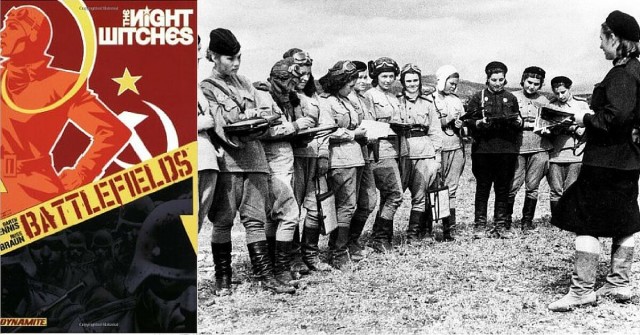
In the west we know little about the Soviet efforts fighting the Nazi’s. We know about the battle of Stalingrad and the battle of Leningrad etc, And we know that Stalin actually killed more people then Hitler but we know very little of the Soviet Armed Forces, leave alone about an all female bombing squad.
Namely, the “Night Witches,” an all-female squadron of bomber pilots who ran thousands of daring bombing raids with little more than wooden planes and the cover of night—and should be as celebrated as their male counterparts.
“Night Witches” is the English translation of Nachthexen, a World War II German nickname for the female military aviators of the 588th Night Bomber Regiment, known later as the 46th “Taman” Guards Night Bomber Aviation Regiment, of the Soviet Air Forces.
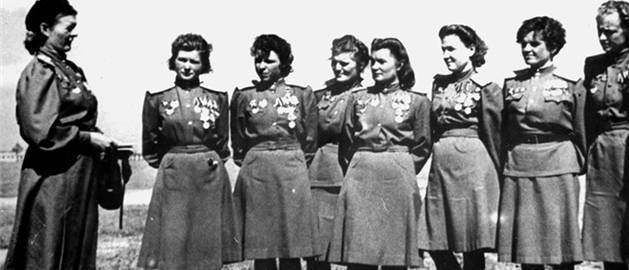
The regiment was formed by Colonel Marina Raskova and led by Major Yevdokia Bershanskaya
In 1938 Marina Raskova and two other women set a world record for non-stop direct flight by women when they flew an ANT-37, a Soviet-built twin-engine aircraft named Rodina (homeland), 6,000 kilometers (3,240 nautical miles) from Moscow to Komsomolsk-on-Amur on the southeastern tip of Siberia.
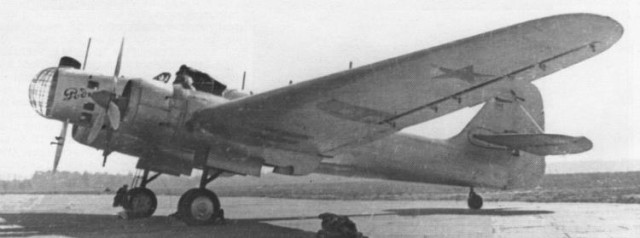
The regiment flew harassment bombing and precision bombing missions against the German military from 1942 until the end of the war.At its largest, it had 40 two-person crews. It flew over 23,000 sorties and is said to have dropped 3,000 tons of bombs. It was the most highly decorated female unit in the Soviet Air Force, each pilot having flown over 800 missions by the end of the war and twenty-three having been awarded the Hero of the Soviet Union title. Thirty of its members died in combat
The regiment flew in wood-and-canvas Polikarpov Po-2 biplanes, a 1928 design intended for use as training aircraft and for crop-dusting, and to this day the most-produced biplane in aviation history.

The planes could carry only six bombs at a time, so multiple missions per night were necessary. Although the aircraft were obsolete and slow, the pilots made daring use of their exceptional maneuverability; they had the advantage of having a maximum speed that was lower than the stall speed of both the Messerschmitt Bf 109 and the Focke-Wulf Fw 190, and as a result, German pilots found them very difficult to shoot down.
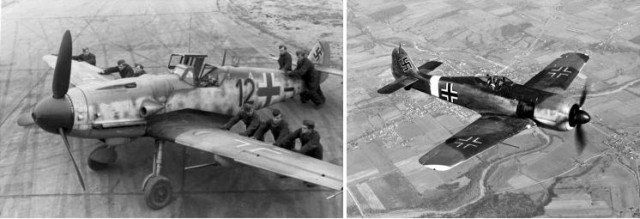
An attack technique of the night bombers was to idle the engine near the target and glide to the bomb release point, with only wind noise left to reveal their location. German soldiers likened the sound to broomsticks and named the pilots “Night Witches.” Due to the weight of the bombs and the low altitude of flight, the pilots carried no parachutes.
From June 1942, the 588th Night Bomber Regiment was within the 4th Air Army. In February 1943, the regiment was honored with a reorganization into the 46th Guards Night Bomber Aviation Regiment and in October 1943 it became the 46th “Taman” Guards Night Bomber Aviation Regiment. “Taman” referred to the unit’s involvement in two celebrated Soviet victories on the Taman Peninsula during 1943.
From the start of the war, Colonel Marina Raskova, a Soviet pilot who was known as the “Russian Amelia Earhart,” began receiving letters from women across Russia wanting to join the war effort in any way they could. Many women served support roles at the time, but it was difficult to make it to the front. Raskova lobbied to finds ways for women to take a more active role in the war, and was highly successful in her efforts, leading to women being eligible for the draft and even convincing the military to establish all-female units.
In October of 1941 the order came down from Joseph Stalin that Raskova was to establish a trio of all-female air squads. The only one reported to have remained exclusively female was the team of night bombers, the 588th Night Bomber Regiment, where everyone from the pilots, to the commanders, to the mechanics were women.
The regiment began filling out in 1942, with young women ranging in age from 17 to 26 transferring to the small town of Engels to begin flight training. The future pilots were greeted by Raskova herself with a no-nonsense, military manner. The women were issued size 42 boots, outfitted with ill-fitting military uniforms made for bulkier male soldiers. Their hair was cut short. As one of the pilots would recall in a later interview, “We didn’t recognize ourselves in the mirror—we saw boys there.”
The women faced significant obstacles even before they began engaging in combat—namely, with the equipment. They had to fly Polikarpov Po-2 aircraft—two-seated, open-cockpit biplanes that were obsolete even by the standards of the day. Made of plywood frames with canvas stretched over them, the craft were light, slow, and provided absolutely no armor. The benefit of the planes was that they had a slower stall speed than the standard German fighters, making them hard to target, and they could take off and land just about anywhere. However, this came as literal cold comfort to the aviators who had to fly the ships through walls of enemy fire in the dead of night, with the freezing wind whipping around and through the exposed cockpits, often giving the pilots frostbite.
But this did little to discourage the women of the 588th. Starting with an initial bombing run on June 8, 1942, the all-female squadron would harry Nazi forces with overnight bombing runs all the way until the end of the war. At the peak of the regiment’s strength, it had as many as 40 two-person crews, flying multiple bombing runs as soon as the sky darkened, taking part in as many as 18 in a single night. The light planes could only carry six bombs at a time, so as soon as one run was complete the pilots would be re-armed and sent back out for another run. Of course this tightly controlled weight limit also meant the women could not bring parachutes and also had to fly at lower, more easily spotted, altitudes.
Nadya Popova recalls those missions and comments that it was a miracle the Witches didn’t suffer more losses. Their planes were the slowest ones in the air force and often came back riddled with bullets, but they kept flying. In August of 1942 Nadya and her navigator crashed in the Caucasus. They were found alive a few days later.
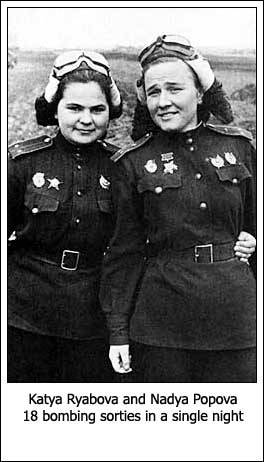
Using such vulnerable craft to make their bombing runs, the cover of night was crucial to their success and survival. Three planes would leave simultaneously, with two of the airplanes drawing searchlights and gunfire, and the third sticking to the darkness, to drop the bombs. In order to remain hidden, the pilots would also kill their engines when they got near their target, and simply glide over it, deploying their payload.
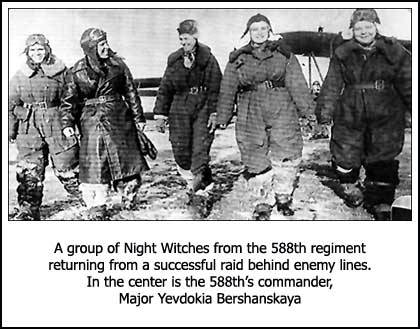
As the silenced bombers sailed over the Nazi forces, making a light “whooshing” sound, German soldiers began referring to them as “Nachthexen,” or “Night Witches,” a name the pilots of the 588th quickly took on with pride. Rumors began to spread among the Germans that the Soviets were giving the women pills and treatments that gave them the night vision of a cat. One of the most famous of the Night Witches, Nadezhda Popova, who herself flew 852 missions, earning her multiple medals and the title of Hero of the Soviet Union.
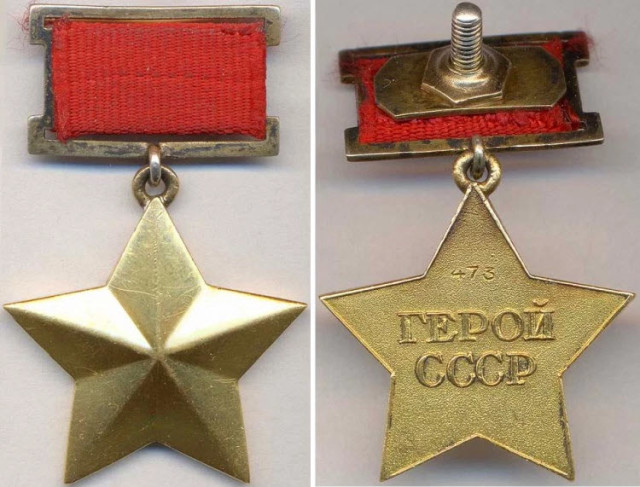
Unfortunately, not everyone was so impressed with the 588th regiment’s fortitude and military prowess. Many in the Soviet military still found the idea of women flying in combat to be laughable, despite their clear ability. Undeterred by the lack of faith from many of their male counterparts, the women embraced their identities, and are said to have painted their lips with navigational pencils and to have drawn flowers on the side of their aircrafts.
The Night Witches didn’t have great planes, or superior bombs, or even very much support for their unit, but they nonetheless became one of the most remarkable fighting forces of World War II. No sorcery needed.
In 1981, a Soviet feature-length film called Night Witches In The Sky
By Dirk de Klein

Δεν υπάρχουν σχόλια:
Δημοσίευση σχολίου